Goliad massacre
The Goliad massacre was an event of the Texas Revolution that occurred on March 27, 1836, following the Battle of Coleto; 425–445 prisoners of war from the Texian Army of the Republic of Texas were killed by the Mexican Army in the town of Goliad, Texas. Among those killed was commander Colonel James Fannin. The killing was carried out under orders from General and President of Mexico Antonio Lopez de Santa Anna. Despite the appeals for clemency by General José de Urrea, the massacre was reluctantly carried out by Lt. Colonel José Nicolás de la Portilla.
| Goliad Massacre | |
|---|---|
| Part of the Goliad Campaign of the Texas Revolution | |
 "Goliad Executions" by illustrator Norman Mills Price | |
| Location | Goliad, Coahuila y Tejas, Centralist Republic of Mexico (now Texas, U.S.) |
| Coordinates | 28.6476°N 97.3830°W |
| Date | March 27, 1836 |
Attack type | Mass murder by firing squad and wounded being clubbed and knifed to death |
| Deaths | 425–445 Texian Army prisoners of war under the command of Colonel James Fannin who was also killed |
| Perpetrators | Mexican Army under orders of General and President of the Centralist Republic of Mexico, Antonio Lopez de Santa Anna were not treated as soldiers but given no quarter as rebels |
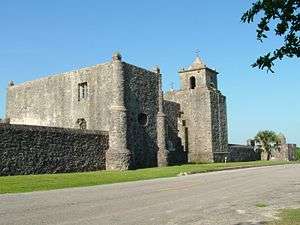
Part of a series on the |
|---|
| History of Mexico |
 |
|
Spanish rule |
|
| Timeline |
|
|
Part of a series on the |
||||||||||||||||||
|---|---|---|---|---|---|---|---|---|---|---|---|---|---|---|---|---|---|---|
| History of Texas | ||||||||||||||||||
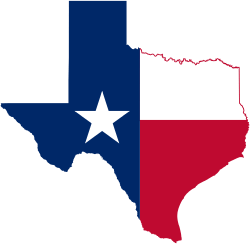 | ||||||||||||||||||
| Timeline | ||||||||||||||||||
|
||||||||||||||||||
|
| ||||||||||||||||||
Background
After Santa Anna learned a force of Texas rebels was heading toward Matamoros, he sent General Urrea to make his way north to Matamoros and then to march north along the coast of Texas to stop them.[1] Urrea arrived in Matamoros and worked to secure cooperation from the local inhabitants on January 31, 1836.[1] Meanwhile, Sam Houston had persuaded all but 70 to 100 men and their leaders, Frank W. Johnson and James Grant, to give up on the expedition and to defend locations in Texas, principally Goliad.[2] On February 12, 1836, Colonel James Fannin took most of the men to defend Presidio La Bahía at Goliad, which he renamed "Fort Defiance".[3]
On February 16, 1836, Urrea crossed the Rio Grande with 188 cavalry and 205 infantry.[4] He recruited about 200 Tejano volunteers from the area, including some previously sympathetic to the Texians, to join him.[4]
At 3:00 a.m. on February 27, 1836, Urrea's advance patrol surprised Johnson and about 45 men, initiating the Battle of San Patricio, where Urrea's force killed 16 and took 24 prisoners.[5] Johnson and four others escaped in the darkness and rejoined Fannin's command at Goliad where they retold a story, which they first told at a ranch where they had taken refuge after the escape, that all the prisoners had been executed.[5] Urrea had sent 18 of the prisoners to Matamoros where they were sentenced to death but were later released.[5] This news persuaded Fannin to abandon any further attempt to send relief to the Alamo or to try to secure badly needed supplies waiting at Matagorda but to prepare Presidio La Bahía at Goliad for defense against the advancing Mexican Army.[6]
On March 2, at the Battle of Agua Dulce, Grant was killed, as were about 20 other men under his command.[7][8]
On March 6, the Mexican force under Santa Anna stormed the Alamo and killed the garrison.[9]
On March 14, Colonel William Ward and 200 men, who had been sent to help Captain Amon B. King evacuate colonists at Refugio, were surrounded by Urrea's force. Although Ward and his men fled that night during a blinding rainstorm, the Mexicans overtook part of Ward's force, killing 18 and capturing 31.[10]
King and a group were executed on March 16 at Refugio, but some 15 to 18 prisoners were marched to Goliad to serve as blacksmiths or mechanics.
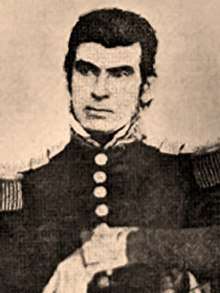
After capturing one of Fannin's messengers with dispatches that told of his plan to wait at Goliad then retreat after King and Ward returned, Urrea ordered the execution of 30 prisoners he decided were mercenaries, but freed over 20 others he determined to be Mexicans or colonists so he would not be hindered by taking prisoners along on his advance on Fannin's force.[11]
On March 19, Urrea had quickly advanced and surrounded 300 men of the Texian Army on the open prairie, near La Bahia (Goliad). The two-day Battle of Coleto ensued, with the Texians holding their own on the first day. However, the Mexicans received overwhelming reinforcements and heavy artillery. In this critical predicament, Fannin and the majority of the men voted to surrender the Texian forces on March 20.[12] Led to believe that they would be paroled and released into the United States, they were returned to the fort at Goliad, now their prison.[13]
Albert Clinton Horton and his company had been acting as the advance and rear guards for Fannin's company. Surprised by an overwhelming Mexican force, most were chased off and escaped, but 18 were captured and marched back to Goliad.[14]
The 75 soldiers of William Parsons Miller and the Nashville Battalion were captured on March 20 and marched in on March 23. They were kept separate from the other prisoners, as they had been unarmed and surrendered without a fight.
On March 22, William Ward and the Georgia Battalion (80 men plus Ward) surrendered after escaping from the Battle of Refugio. About 26 men were retained at Victoria as laborers, but 55 of the prisoners were marched into Goliad, on March 25.[15][16]
Massacre
The Mexicans took the Texians back to Goliad, where they were held as prisoners at Fort Defiance (Presidio La Bahia). The Texians thought they would likely be set free in a few weeks. Urrea departed Goliad, leaving Colonel José Nicolás de la Portilla in command. Urrea wrote to Santa Anna to ask for clemency for the Texians.[17]
Under a decree pressured by Santa Anna and passed by the Mexican Congress on December 30 of the previous year, armed foreigners taken in combat were to be treated as pirates and executed. Urrea wrote in his diary that he "...wished to elude these orders as far as possible without compromising my personal responsibility." Santa Anna responded to this entreaty by repeatedly ordering Urrea to comply with the law and execute the prisoners.[17] He also had a similar order sent directly to the "Officer Commanding the Post of Goliad". This order was received by Portilla on March 26, who decided it was his duty to comply despite receiving a countermanding order from Urrea later that same day.[13][18]
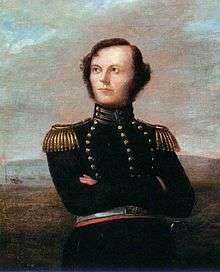
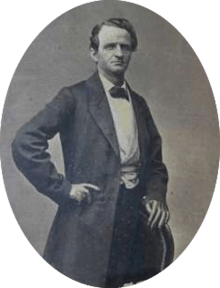
The next day, Palm Sunday, March 27, 1836, Portilla had between 425 and 445 Texians marched out of Fort Defiance in three columns on the Bexar Road, San Patricio Road, and the Victoria Road, between two rows of Mexican soldiers; they were shot point blank, wounded survivors were clubbed and knifed to death.[13][19]
Forty Texians were unable to walk. Thirty-nine were killed inside the fort under the direction of Captain Carolino Huerta of the Tres Villas battalion, with Colonel Garay saving one, Jack Shackelford. Fannin was the last to be executed, after seeing his men killed. Aged 32, he was taken by Mexican soldiers to the courtyard in front of the chapel, blindfolded, and seated in a chair (due to his leg wound from the battle). He made three requests: that his personal possessions be sent to his family, to be shot in the heart and not the face, and to be given a Christian burial.[20] The soldiers took his belongings, shot him in the face, and burned his body along with those of the other Texians who died that day.[20][21]
The entire Texian force was killed, except for 28 men who feigned death and escaped. Among these was Herman Ehrenberg, who later wrote an account of the massacre,[22] William Lockhart Hunter, also of the New Orleans Greys, who would survive despite being bayoneted and clubbed with a musket,[23] and four members of Shackelford's Red Rovers- Dillard Cooper,[24] Zachariah S. Brooks, Wilson Simpson, and Isaac D. Hamilton,[25] who would escape after days on the run.
Owing to the intervention of Francita Alavez (the "Angel of Goliad") and the courageous effort of Garay, 20 more men were spared to act as doctors, interpreters, or workers,[26] including Shackelford.[20]
Also spared were the 75 soldiers of Miller and the Nashville Battalion. They were later marched to Matamoros.[27]
Spared men were given white arm bands, and while wearing them could walk about freely. They were advised not to take off the arm band, since Mexican troops were hunting for those few who had escaped from Coleto, Victoria, and the massacre itself.
Aftermath
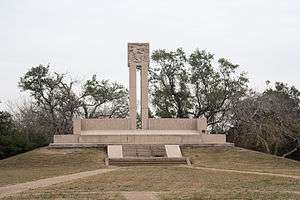
The massive number of Texian prisoner-of-war casualties throughout the Goliad Campaign led to Goliad being called a "massacre" by Texian forces and fueled the frenzy of the Runaway Scrape.
After the executions, the Texians' bodies were piled and burned.[28] Their charred remains were left in the open, unburied, and exposed to vultures and coyotes.[28] Nearly one month later, word reached La Bahia (Goliad) that Santa Anna had been defeated and surrendered while trying to flee at the Battle of San Jacinto.[29]
General Thomas J. Rusk found the remains of the massacre victims in June 1836 and gave orders for a formal military funeral. The remains were interred at the location southeast of the Presidio la Bahia where the Fannin Memorial Monument now stands. The whereabouts of the gravesite was forgotten until years later when human bone fragments were discovered by a group of boys.[30]
The massacre is commemorated in Walt Whitman's poem Song of Myself, section 34, which features in his collected poems titled Leaves of Grass. [31]
In 1939, the Fannin Memorial Monument by Raoul Josset was erected at the gravesite. It features an art deco relief sculpture and the names of the men who were slain.[32]

Notes
- Roell, Craig H. (2013), Matamoros and the Texas Revolution, Denton, TX: Texas State Historical Association, p. 70, ISBN 978-0-87611-260-1.
- Roell (2013), p. 64.
- Roell (2013), pp. 4, 76, 82.
- Roell (2013), p. 71.
- Long (1990), p. 201.
- Nofi (1994), p. 95.
- Nofi, Albert A. (1994), The Alamo and the Texas War of Independence, September 30, 1835 to April 21, 1836: Heroes, Myths, and History, New York: Da Capo Press, p. 94, ISBN 978-0-938289-10-4
- O'Connor (1966), pp. 147–148 gives the number of men killed with Grant as 11.
- Nofi (1994), pp. 107–123.
- Long (1990), pp. 273–274.
- Long (1990), p. 274.
- Long (1990), p. 278.
- Hardin (1994), pg. 173
- Matthew Ellenberger, "HORTON, ALBERT CLINTON," Handbook of Texas Online (http://www.tshaonline.org/handbook/online/articles/fho62), accessed June 09, 2011. Published by the Texas State Historical Association.
- Castaneda (1970), p. 19.
- Long, 1990, p. 280 states that Ward and 120 men from his Georgia Battalion were captured by Urrea's force.
- Long (1990), p. 280.
- Harbert Davenport and Craig H. Roell, "GOLIAD MASSACRE," Handbook of Texas Online (http://www.tshaonline.org/handbook/online/articles/qeg02), accessed February 02, 2012. Published by the Texas State Historical Association.
- Long (1990), p. 284.
- Long (1990), p. 285.
- Hardin (1994), pg. 174
- Long, 1990, pp. 284, 287–l290, 401.
- ROELL, CRAIG H. (15 June 2010). "HUNTER, WILLIAM LOCKHART". tshaonline.org. Retrieved 11 March 2019.
- "COOPER, DILLARD". tshaonline.org. 12 June 2010. Retrieved 11 March 2019.
- HAMILTON, LESTER (15 June 2010). "HAMILTON, ISAAC D." tshaonline.org. Retrieved 11 March 2019.
- Hardin (1994), p. 237.
- Craig H. Roell, "MILLER, WILLIAM PARSONS," Handbook of Texas Online (http://www.tshaonline.org/handbook/online/articles/fmi30), accessed April 03, 2011. Published by the Texas State Historical Association.
- Long (1990), p. 286.
- Long, (1990), pp. 309–318.
- "Massacre at Goliad". www.tamu.edu. Retrieved March 29, 2016.
- Whitman, W. (1860). Leaves of Grass. Boston: Thayer & Eldridge.
- "Goliad State Park & Historic Site Goliad Area Historic Sites — Texas Parks & Wildlife Department". tpwd.texas.gov. Retrieved March 7, 2018.
References
- Castaneda, H.W. (1970). The Mexican Side of the Texas Revolution. Texas: Graphic Ideas. ASIN B003M0PG1S.
- Hardin, Stephen L. (1994). Texian Iliad – A Military History of the Texas Revolution. Austin, TX: University of Texas Press. ISBN 0-292-73086-1. OCLC 29704011.
- Long, Jeff (1990). Duel of Eagles: The Mexican and U.S. Fight for the Alamo. New York: William Morrow and Company, Inc. ISBN 978-0-688-07252-0.
- Nofi, Albert A. (1994). The Alamo and the Texas War of Independence, September 30, 1835 to April 21, 1836: Heroes, Myths, and History. New York: Da Capo Press. ISBN 978-0-938289-10-4.
- Roell, Craig H. (2013). Matamoros and the Texas Revolution. Denton, TX: Texas State Historical Association. ISBN 978-0-87611-260-1.
- Davenport, Harbert; Roell, Craig H. "GOLIAD MASSACRE". Handbook of Texas Online. Retrieved November 27, 2010.